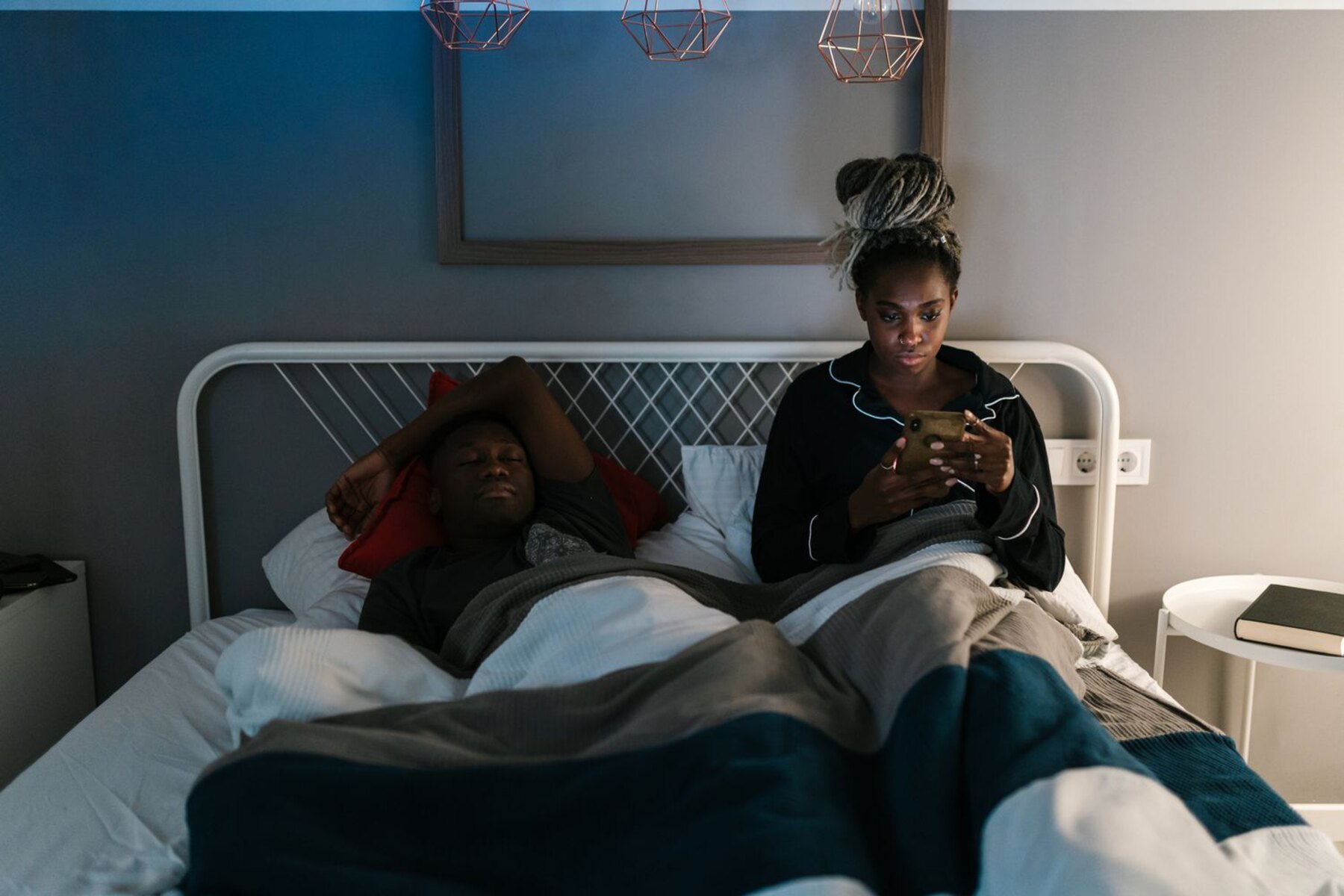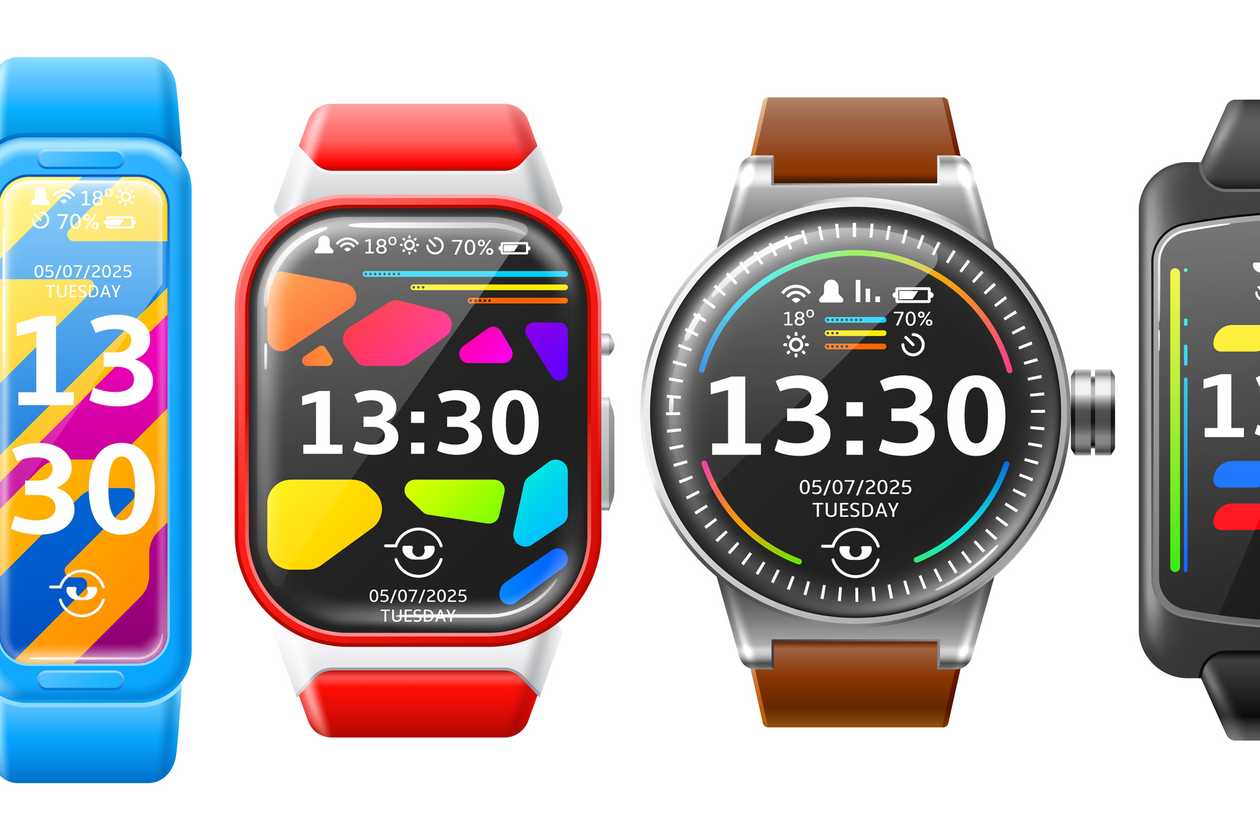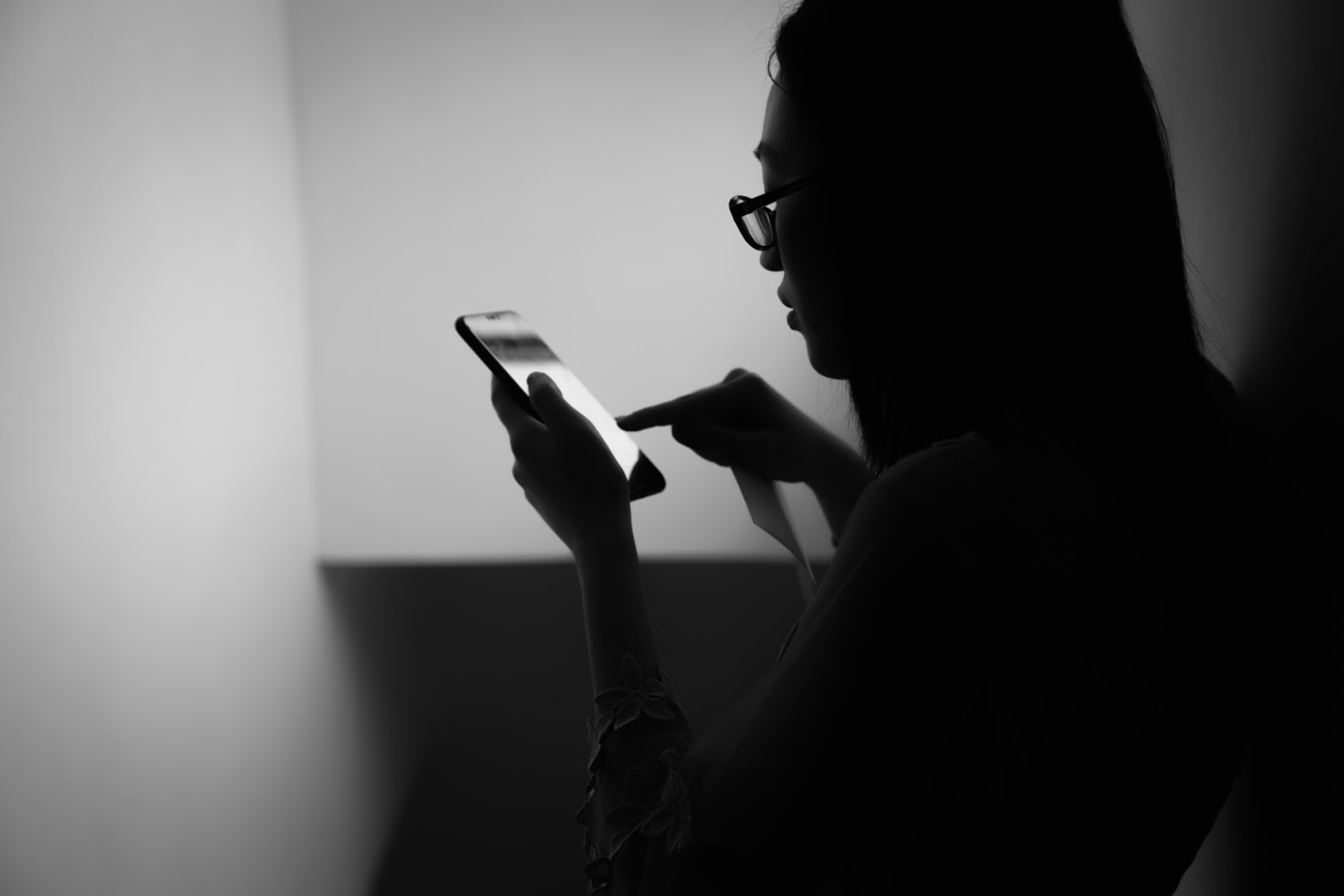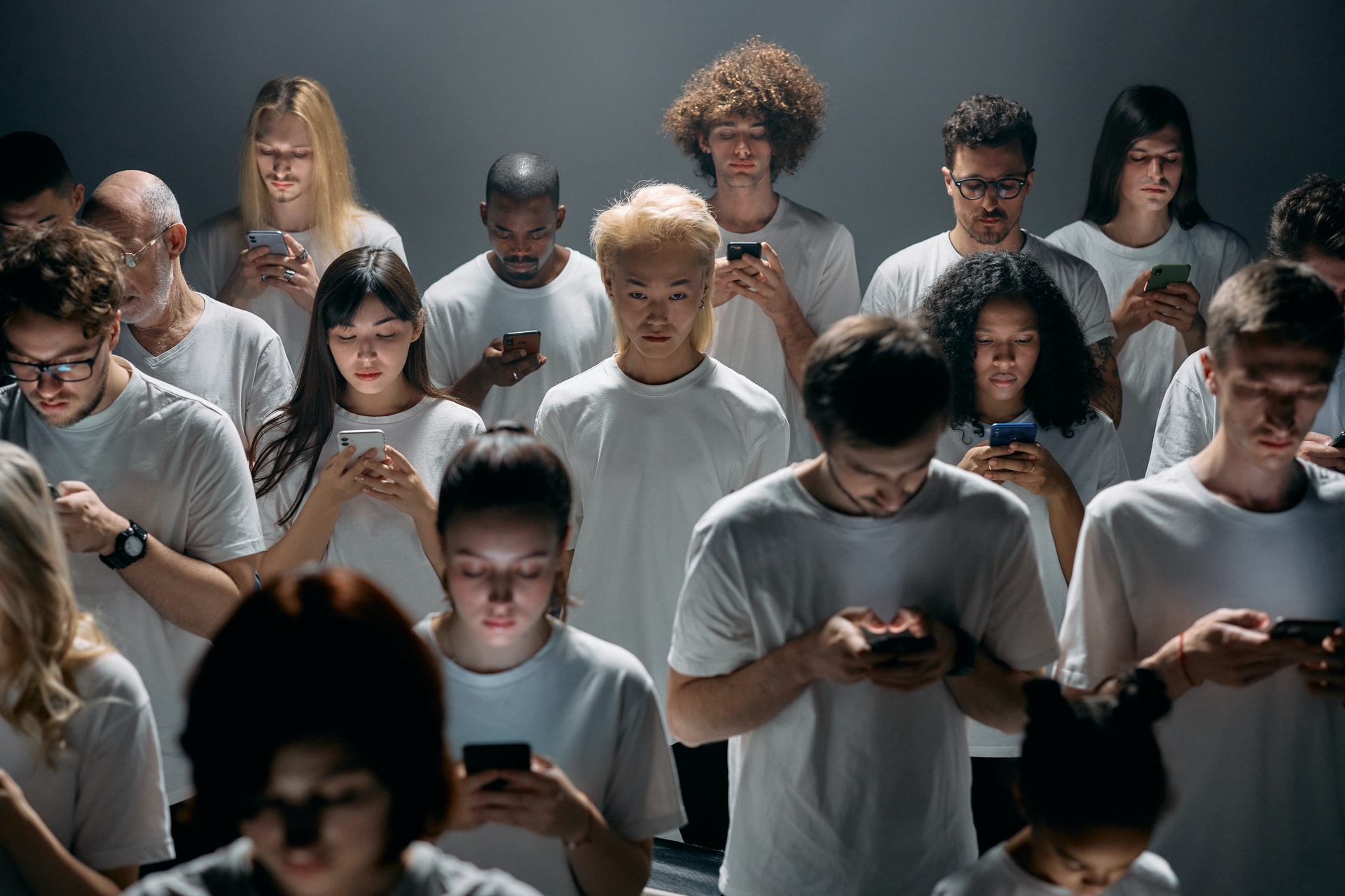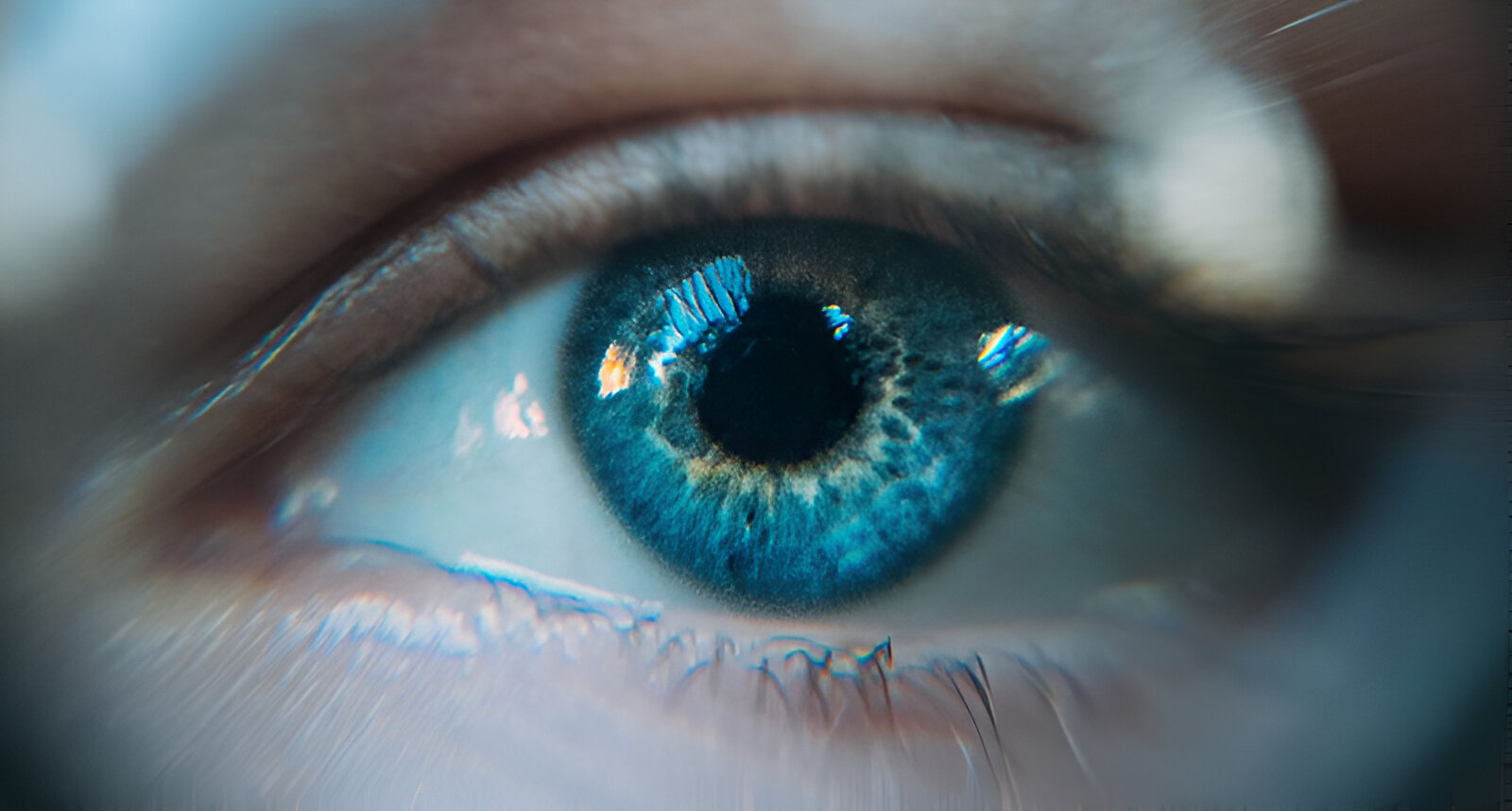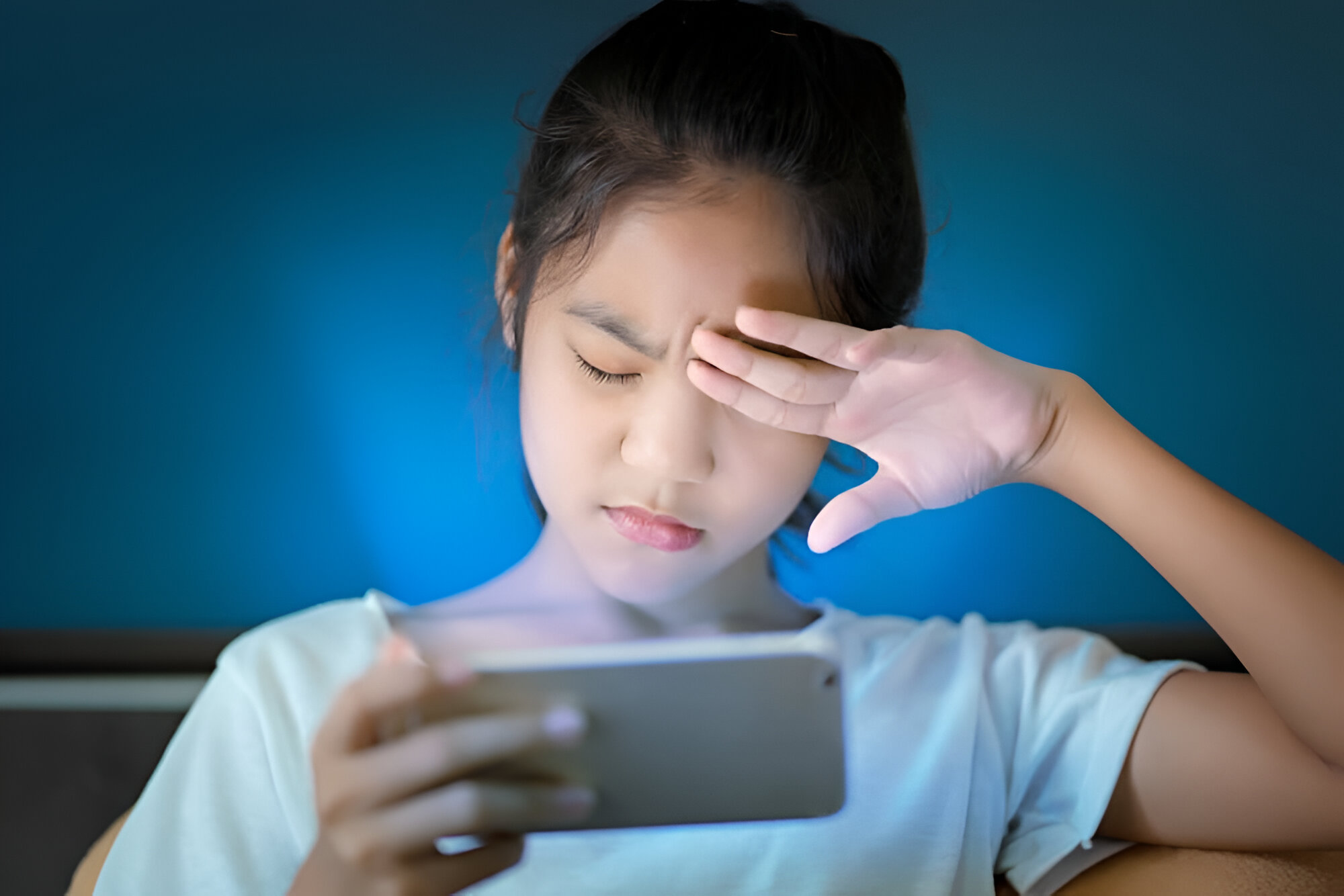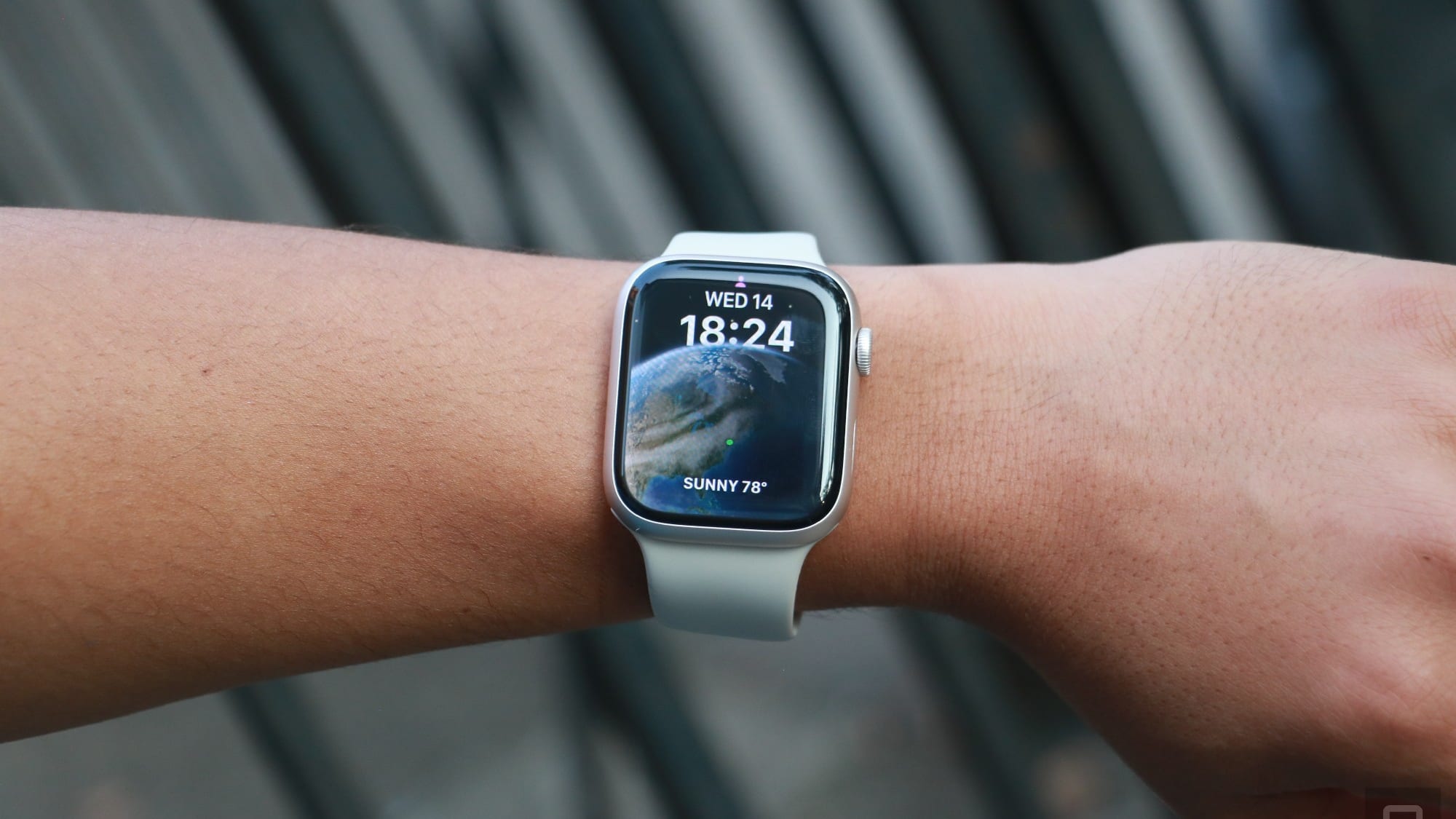Introduction
The rise of smartphones has revolutionized the way we communicate, work, and access information. These handy devices have become an integral part of our daily lives, allowing us to stay connected and entertained at all times. However, the increasing reliance on smartphones can have unintended consequences, particularly when it comes to our sleep patterns.
Sleep plays a vital role in our overall health and well-being. It is during this restorative period that our bodies repair, recharge, and rejuvenate. Unfortunately, the incessant use of smartphones and the constant exposure to screens have been found to negatively impact our sleep quality and quantity.
Smartphones emit blue light, which can suppress the production of melatonin, a hormone that regulates our sleep-wake cycles. Moreover, engaging in activities like social media browsing, gaming, or watching videos before bedtime can stimulate the brain and make it harder to fall asleep.
In this article, we will explore the various ways in which smartphone activities are linked to poor sleep. We will examine the impact of screen time on insomnia, the effects of social media on sleep quality, and the role of blue light in hindering melatonin production. Additionally, we will discuss how excessive smartphone use can contribute to sleep disorders and disturbances.
Furthermore, we will provide strategies and tips to help improve sleep in the smartphone age. These recommendations will include establishing a digital curfew, creating a sleep-friendly environment, and practicing good sleep hygiene.
It is important to recognize the potential consequences of smartphone usage on our sleep patterns and take proactive steps to mitigate these effects. By understanding the relationship between smartphones and poor sleep, we can make informed decisions and prioritize our overall health and well-being.
The Impact of Smartphones on Sleep
Smartphones have undoubtedly revolutionized the way we live, work, and connect with others. However, the increasing prevalence of smartphone use has raised concerns about its impact on our sleep. Research shows that excessive smartphone use can have detrimental effects on our sleep quality and quantity.
One of the main ways smartphones affect sleep is through the blue light emitted by their screens. Blue light has a short wavelength and a high energy level, which can suppress the production of melatonin, a hormone that regulates our sleep-wake cycles. When we expose ourselves to blue light, especially before bedtime, it can disrupt our natural sleep patterns and make it harder to fall asleep.
Another factor that contributes to poor sleep is the engagement in stimulating activities on smartphones, such as browsing social media, playing games, or watching videos. These activities can be mentally and emotionally stimulating, making it difficult to unwind and relax before bed. The constant scrolling, notifications, and interactions can keep our brains active and alert, delaying the onset of sleep.
Moreover, the use of smartphones, particularly in bed, can lead to a dependency on these devices, making it harder to disconnect from them and prioritize sleep. This addiction to mobile devices can result in a vicious cycle, where individuals continue to prioritize screen time over restful sleep, leading to chronic sleep deprivation and fatigue.
Furthermore, the accessibility and convenience of smartphones often lead to the blurring of boundaries between work and personal life. People often feel compelled to check work emails or respond to messages during late hours, encroaching on their rest and relaxation time. This constant connection to work-related tasks can create stress and anxiety, making it even more challenging to unwind and achieve a restful sleep.
In summary, the impact of smartphones on sleep is multifaceted. The combination of blue light exposure, engagement in stimulating activities, addiction to mobile devices, and work-related stress can all contribute to poor sleep quality and quantity. It is important to establish boundaries, practice digital detox before bed, and prioritize sleep to maintain a healthy sleep routine in the smartphone age.
Screen Time and Insomnia
In today’s digital age, the excessive use of smartphones has become a common phenomenon. Many individuals find themselves spending hours scrolling through social media feeds, watching videos, or playing games on their devices. However, this extensive screen time can have a profound impact on our sleep, leading to the development of insomnia.
A major contributor to the link between screen time and insomnia is the exposure to blue light emitted by smartphones. Studies have shown that blue light can disrupt the production of melatonin, a hormone that helps regulate our sleep-wake cycles. As we expose ourselves to blue light from screens, especially during the evening and night, it sends a signal to our brain to stay awake and alert, making it difficult to fall asleep and stay asleep throughout the night.
Additionally, the engaging and stimulating nature of smartphone activities can further contribute to insomnia. Engaging in activities like social media browsing, gaming, or watching videos can increase mental and emotional arousal, making it challenging to wind down and relax before bed. The constant stream of information, notifications, and interactions on social media platforms can activate our brains and keep us mentally engaged, hindering the ability to transition into a restful sleep state.
Furthermore, the mere presence of smartphones in the bedroom can significantly impact sleep quality. Many individuals have a habit of keeping their smartphones within arm’s reach, enabling immediate access to notifications and the temptation to check their devices even during the night. This constant disruption can further disrupt sleep patterns and prevent individuals from entering the deeper, more restorative stages of sleep.
To mitigate the negative effects of screen time on insomnia, it is important to establish healthy habits and boundaries when it comes to smartphone use. Implementing a digital curfew, where devices are turned off or kept away at least an hour before bed, can help signal to the brain that it is time to wind down and prepare for sleep. Creating a screen-free bedroom environment, by charging devices in another room, eliminates the temptation to engage with smartphones during the night.
Additionally, incorporating relaxation techniques before bed, such as reading a book, practicing meditation or deep breathing exercises, can help promote a calm and conducive sleep environment. Prioritizing sleep hygiene, which includes maintaining a consistent sleep schedule, creating a comfortable sleep environment, and engaging in a relaxing bedtime routine, can also support better sleep and alleviate insomnia symptoms.
By being mindful of our screen time and implementing strategies to minimize its impact, we can take proactive steps towards improving our sleep quality and managing insomnia more effectively.
Social Media and Sleep Quality
Social media has become a ubiquitous part of modern life, with a substantial portion of the population spending a significant amount of time engaging with various platforms. While social media offers many benefits, it also has a notable impact on sleep quality.
One of the main ways social media affects sleep is through its addictive nature. The constant scrolling, liking, and commenting can create a sense of FOMO (fear of missing out) and a compulsive need to stay connected, even at the expense of sleep. The temptation to check notifications and engage with social media posts can postpone bedtime and disrupt the natural sleep routine.
Moreover, the content found on social media can be emotionally stimulating and engaging. Following news feeds filled with updates on friends, acquaintances, and public figures can evoke a wide range of emotions. Emotional responses such as excitement, joy, or anger can activate our brains, making it difficult to calm our minds and achieve a restful sleep state.
Furthermore, social media can contribute to anxiety and stress, both of which can negatively impact sleep quality. Constant exposure to carefully curated posts and the pressure to present a perfect image online can lead to comparison, self-doubt, and dissatisfaction with one’s own life. This can generate anxiety and rumination, making it harder to relax and fall asleep.
In addition to the psychological impact, social media use before bed can also disrupt the circadian rhythm and hinder melatonin production. The blue light emitted by smartphones suppresses the release of melatonin, making it harder to fall asleep and maintain a regular sleep schedule.
To improve sleep quality in the face of social media, it is helpful to establish boundaries and adopt healthy digital habits. Setting specific time limits for social media usage can prevent excessive engagement and allow for adequate time to wind down before sleep. Designating specific periods during the day for checking social media updates and notifications can help avoid the constant interruption of sleep time.
Creating a nighttime routine that excludes social media use is also beneficial to sleep quality. Engaging in relaxing activities such as reading a book, taking a warm bath, or practicing mindfulness can help calm the mind and prepare the body for sleep.
Lastly, it may be beneficial to reassess the content and accounts followed on social media platforms. Unfollowing accounts that evoke negative emotions, promote comparison, or fuel anxiety can help create a more positive and peaceful social media experience.
By being mindful of our social media usage and implementing strategies to manage its impact on sleep, we can preserve and improve our sleep quality. Prioritizing a healthy balance between social media engagement and restful sleep is essential for overall well-being and optimal functioning during the day.
Blue Light and Melatonin Production
One of the key factors contributing to poor sleep quality in the smartphone age is the exposure to blue light emitted by electronic devices. Blue light has a short wavelength and a high energy level, making it particularly effective at suppressing the production of melatonin, a hormone that plays a vital role in regulating our sleep-wake cycles.
Melatonin is produced naturally by the pineal gland in our brain, and its release is influenced by the presence or absence of light. Exposure to natural light during the day helps to regulate our circadian rhythm, ensuring that melatonin production is suppressed, keeping us alert and awake. In contrast, when darkness falls, melatonin levels rise, promoting sleep and relaxation.
However, the increasing use of smartphones and other electronic devices, particularly in the evening and at night, leads to prolonged exposure to blue light. This exposure disrupts the delicate balance of melatonin production and interferes with our natural sleep-wake cycles.
Blue light has a unique impact on melatonin production because it is more effective at inhibiting its release compared to other wavelengths of light. When blue light enters our eyes, it signals to the brain that it is still daytime, thus reducing the secretion of melatonin. This delay in melatonin release can result in difficulties falling asleep, as well as a disruption in the quality and duration of sleep.
Interestingly, not all colors of light have the same effect on melatonin suppression. Studies have shown that blue light has the strongest suppressing effect, while other colors, such as red or amber light, have a minimal impact on melatonin release. This is why some electronic devices offer features like “Night Mode” or “Night Shift,” which reduce the amount of blue light emitted and shift the display towards warmer colors.
It is important to note that the effects of blue light on melatonin production and sleep quality can vary from person to person. Factors such as age, genetics, and individual sensitivity to light can influence the degree to which blue light affects sleep.
To minimize the impact of blue light on melatonin production and promote better sleep, several strategies can be implemented. One effective approach is to limit exposure to electronic devices, especially in the evening and before bedtime. Reducing screen time and establishing a digital curfew can provide an opportunity for our bodies to naturally regulate melatonin production and prepare for sleep. If using electronic devices at night is unavoidable, using blue light filters or wearing blue light-blocking glasses can help minimize the negative effects on sleep quality.
By understanding the relationship between blue light and melatonin production, we can take steps to mitigate the disruption caused by excessive smartphone use and create a sleep-friendly environment that promotes optimal rest and rejuvenation.
Smartphone Use and Sleep Disorders
The widespread use of smartphones has not only impacted sleep quality but has also been linked to the development of various sleep disorders. The constant availability and addictive nature of smartphones have contributed to the emergence of sleep disorders affecting a significant portion of the population.
One of the most prevalent sleep disorders associated with smartphone use is insomnia. Insomnia is characterized by difficulty falling asleep or staying asleep, despite having adequate opportunity to do so. The habit of using smartphones before bed, especially to engage in stimulating activities or to check social media, can contribute to insomnia symptoms. The constant exposure to blue light, coupled with the mental and emotional arousal induced by smartphone activities, can disrupt the natural sleep-wake cycles and inhibit the onset of sleep.
Another sleep disorder linked to smartphone use is delayed sleep phase disorder (DSPD). This disorder is characterized by a consistent delay in the onset of sleep and tendency to wake up later than desired. The use of smartphones late into the night, often engaging in stimulating activities or scrolling through social media feeds, can contribute to a delayed sleep-wake rhythm. The exposure to blue light and the engagement in alerting and mentally engaging activities can significantly delay the natural sleep onset time and perpetuate a cycle of delayed sleep.
Additionally, smartphone use has been associated with sleep-related breathing disorders, such as sleep apnea. Sleep apnea is characterized by pauses in breathing during sleep, often accompanied by loud snoring. The excessive use of smartphones, particularly when used in bed or in a supine position, can exacerbate sleep apnea symptoms. The posture and position often adopted while using smartphones can restrict proper airflow and contribute to the obstruction of the airway, leading to disrupted sleep patterns and decreased sleep quality.
Furthermore, smartphone addiction, also known as problematic mobile phone use or smartphone dependency, can contribute to sleep disorders. People who are addicted to their smartphones may prioritize screen time over sleep, leading to chronic sleep deprivation and the development of sleep disorders. The constant preoccupation with smartphones and the fear of missing out can significantly impact sleep quality and quantity, exacerbating the risk of various sleep disorders.
To address the relationship between smartphone use and sleep disorders, it is crucial to establish healthy digital habits and incorporate strategies that promote better sleep hygiene. These strategies may include setting boundaries and limiting smartphone use before bed, creating a relaxing bedtime routine, and ensuring a sleep-friendly environment free from electronic distractions. Seeking professional help and guidance may be beneficial for individuals experiencing severe sleep disorders related to smartphone use.
By recognizing the impact of smartphone use on sleep disorders and implementing appropriate measures, we can work towards improving our sleep quality and overall well-being in the smartphone age.
Addiction to Mobile Devices and Sleep Disturbances
In the digital era, the prevalence of smartphone addiction has become a growing concern. People of all ages are increasingly dependent on their mobile devices, leading to detrimental effects on various aspects of their lives, including sleep. Addiction to mobile devices can significantly disrupt sleep patterns and contribute to a range of sleep disturbances.
One of the ways smartphone addiction impacts sleep is by interfering with the establishment of a regular sleep routine. Individuals who are addicted to their mobile devices often prioritize screen time over sleep, leading to insufficient sleep duration and irregular sleep schedules. This disruption can result in significant sleep deprivation and may contribute to fatigue, lack of concentration, and decreased overall productivity.
The constant interaction with smartphones also contributes to sleep disturbances through heightened cognitive and emotional stimulation. Engaging with social media, playing games, or watching videos on smartphones before bed can activate the brain and make it difficult to relax and fall asleep. The content and interactions on mobile devices can evoke strong emotions, leading to rumination, anxiety, and racing thoughts that impede the transition into a restful sleep state.
Moreover, the addictive nature of mobile devices can exacerbate the problem of sleep disturbances by contributing to a state of hyperarousal. The constant engagement with smartphones stimulates the release of dopamine, a neurotransmitter associated with pleasure and reward. This continuous reinforcement can lead to a craving for smartphone use, even during sleep hours, creating a vicious cycle of disrupted sleep patterns and further sleep disturbances.
Additionally, the blue light emitted by smartphones suppresses the production of melatonin, the hormone responsible for regulating sleep-wake cycles. This disruption can interfere with the ability to fall asleep and maintain a consistent sleep pattern. The addiction to mobile devices worsens this problem, as individuals are more likely to use their smartphones late into the night, prolonging exposure to blue light and exacerbating the impact on sleep quality.
To address the impact of mobile device addiction on sleep, it is essential to recognize the signs of addiction and implement strategies to establish a healthier relationship with smartphones. Creating boundaries around smartphone use, such as setting designated screen-free times or areas, can help reduce dependence and promote better sleep behaviors. Establishing a relaxing bedtime routine, free from smartphone engagement, can also facilitate the transition into restful sleep.
Developing alternative coping mechanisms and hobbies that do not involve smartphone use can help break the cycle of addiction. Engaging in activities such as reading, practicing mindfulness or meditation, or pursuing creative outlets can provide healthier alternatives to smartphone dependency and promote better sleep hygiene.
By addressing smartphone addiction and prioritizing healthy sleep habits, individuals can take control of their sleep patterns and improve their overall well-being. Recognizing the detrimental effects of smartphone addiction on sleep is the first step towards achieving a healthier, more balanced lifestyle in the digital age.
Strategies for Better Sleep in the Smartphone Age
In the smartphone age, it is crucial to prioritize healthy sleep habits and establish a balanced relationship with our digital devices. Here are some strategies to promote better sleep in the midst of smartphone use:
1. Set a Digital Curfew: Establish a specific time in the evening when you turn off or put away your smartphone. This curfew allows your brain to relax and wind down before bed, signaling the body that it is time for sleep.
2. Create a Sleep-Friendly Environment: Make your bedroom a sanctuary for sleep by eliminating electronic distractions. Remove smartphones and other screens from the bedroom, and create a calm and comfortable environment conducive to relaxation.
3. Practice Good Sleep Hygiene: Establish a consistent sleep routine by going to bed and waking up at the same time every day, even on weekends. Avoid stimulating activities, such as intense exercise or consuming caffeine, close to bedtime, as they can interfere with sleep quality.
4. Use Night Mode or Blue Light Filters: Activate the Night Mode feature on your smartphone or use blue light filters to reduce the impact of blue light on melatonin production. These features shift the display towards warmer colors and minimize the suppressive effects of blue light on sleep.
5. Establish Boundaries: Set limits on your smartphone use, both in terms of time and content. Avoid engaging with stimulating or emotionally arousing activities on your smartphone close to bedtime. This includes avoiding social media browsing, intense gaming, or watching exciting or disturbing videos.
6. Practice Relaxation Techniques: Engage in activities that promote relaxation and prepare the body for sleep. This may include reading a book, taking a warm bath, practicing deep breathing exercises, or listening to calming music.
7. Prioritize Digital Detox: Take regular breaks from your smartphone and other digital devices. Set aside designated periods each day where you engage in screen-free activities, such as spending time outdoors, connecting with loved ones, or pursuing hobbies that do not involve electronic screens.
8. Establish Tech-Free Zones: Designate certain areas or times in your home where smartphone use is not allowed. For example, make your bedroom smartphone-free or implement device-free meals with your family or loved ones.
9. Seek Support When Needed: If you find it challenging to break free from smartphone addiction or if your sleep disturbances persist, seek professional help. Cognitive-behavioral therapy or counseling can provide valuable guidance and support to address underlying issues and establish healthier habits.
Remember, a healthy and balanced relationship with smartphones is essential for optimal sleep. By implementing these strategies, you can prioritize your sleep, improve the quality of your rest, and promote overall well-being in the smartphone age.
Conclusion
In the smartphone age, the impact of our digital devices on sleep quality and patterns cannot be overstated. The constant exposure to screens, the engagement in stimulating activities, and the addictive nature of smartphones have all contributed to a decline in sleep quality and an increase in sleep disturbances and disorders.
From the suppressive effects of blue light on melatonin production to the disruption caused by smartphone addiction, it is evident that a balanced approach to smartphone use is crucial for maintaining healthy sleep habits. Recognizing the impact of smartphones on sleep is the first step towards implementing strategies that can promote better sleep in the smartphone age.
By setting boundaries and establishing a digital curfew, creating a sleep-friendly environment, practicing good sleep hygiene, and implementing relaxation techniques, we can minimize the negative impact of smartphones on our sleep patterns. Additionally, utilizing features like Night Mode or blue light filters and seeking professional help when needed can aid in managing sleep disturbances associated with smartphone use.
It is essential to prioritize our well-being by creating a healthy balance between smartphone use and sleep. By being mindful of our digital habits and incorporating effective strategies, we can improve sleep quality, enhance overall health and well-being, and better navigate the challenges of the smartphone age.
Let us embrace the power of technology while maintaining a healthy and balanced perspective. By doing so, we can optimize our sleep and ensure that we are well-rested, energized, and ready to tackle each day with renewed vitality and focus.







